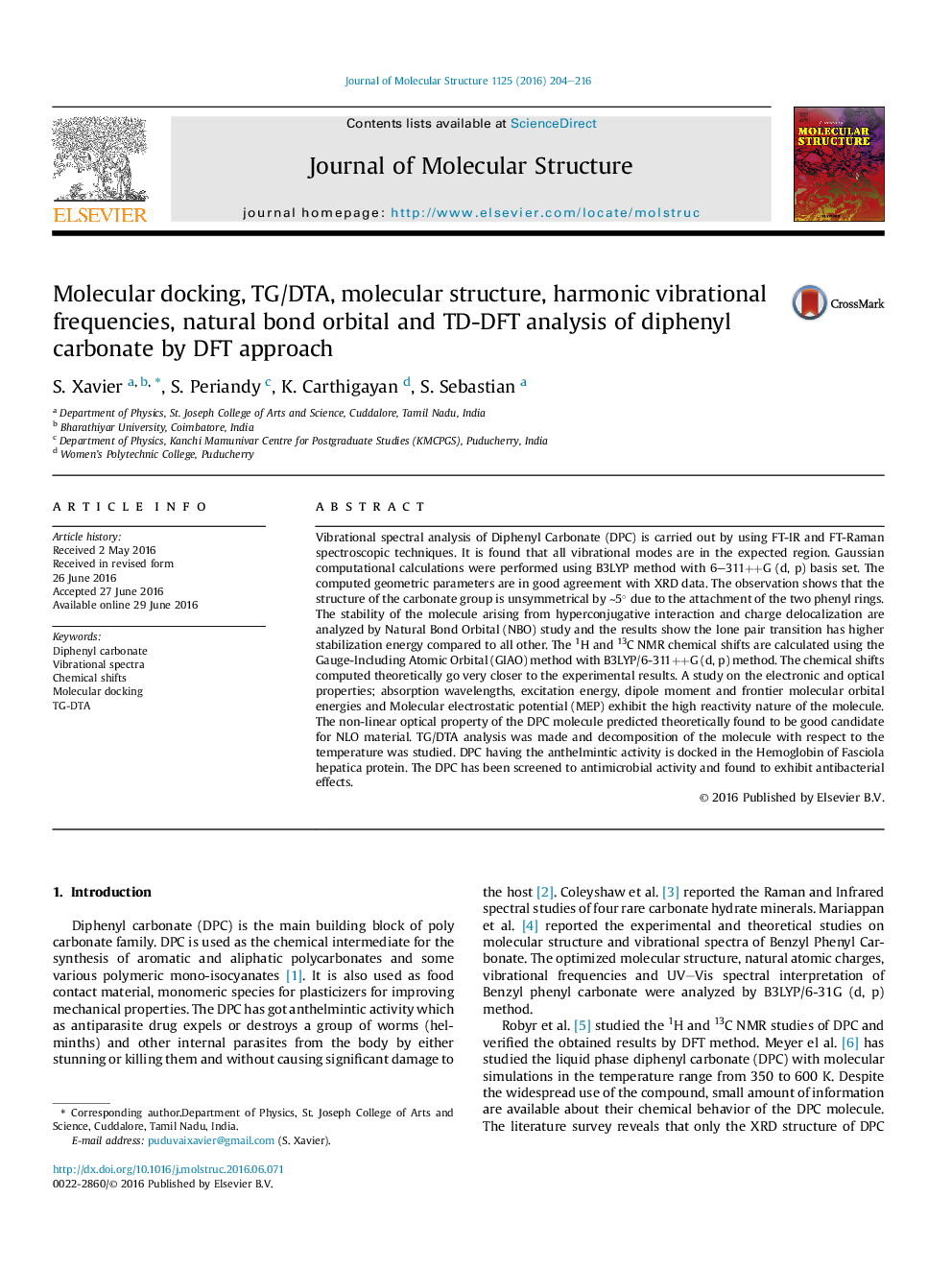| Article ID | Journal | Published Year | Pages | File Type |
|---|---|---|---|---|
| 1400930 | Journal of Molecular Structure | 2016 | 13 Pages |
•A detailed interpretation of Infrared and Raman spectra of DPC were reported.•The NBO, HOMO and LUMO analysis were also performed by DFT approach.•The TG/DTA analysis exhibited decomposition of the molecule with the temperature.•The molecule docking study was made with Haemoglogen of Fasciola Hepatica.• Various antibacterial activities of the molecule were studied.
Vibrational spectral analysis of Diphenyl Carbonate (DPC) is carried out by using FT-IR and FT-Raman spectroscopic techniques. It is found that all vibrational modes are in the expected region. Gaussian computational calculations were performed using B3LYP method with 6–311++G (d, p) basis set. The computed geometric parameters are in good agreement with XRD data. The observation shows that the structure of the carbonate group is unsymmetrical by ∼5° due to the attachment of the two phenyl rings. The stability of the molecule arising from hyperconjugative interaction and charge delocalization are analyzed by Natural Bond Orbital (NBO) study and the results show the lone pair transition has higher stabilization energy compared to all other. The 1H and 13C NMR chemical shifts are calculated using the Gauge-Including Atomic Orbital (GIAO) method with B3LYP/6-311++G (d, p) method. The chemical shifts computed theoretically go very closer to the experimental results. A study on the electronic and optical properties; absorption wavelengths, excitation energy, dipole moment and frontier molecular orbital energies and Molecular electrostatic potential (MEP) exhibit the high reactivity nature of the molecule. The non-linear optical property of the DPC molecule predicted theoretically found to be good candidate for NLO material. TG/DTA analysis was made and decomposition of the molecule with respect to the temperature was studied. DPC having the anthelmintic activity is docked in the Hemoglobin of Fasciola hepatica protein. The DPC has been screened to antimicrobial activity and found to exhibit antibacterial effects.
Graphical abstractFigure optionsDownload full-size imageDownload as PowerPoint slide
